Atkinsons (post 1930)
Continued from: Atkinsons
Atkinsons posted a £34,194 loss in 1930 but its profitability steadily recovered during the Great Depression of the 1930s, the company reporting a net profit of £37,428 in 1936, £42,808 in 1937 and £42,918 in 1938. The new subsidiaries and factories in South America and elsewhere were now contributing to the company’s revenues rather than draining its resources. Sales in the American cosmetics market, then the largest in the world, may have been improved by Atkinsons appointing Kent Brush Sales Corporation as its distributor there. They subsequently opened a New York showroom for Atkinsons’ products at 411 Fifth Avenue.
In the United Kingdom, British regulatory changes on the use of industrial spirits allowed Atkinsons to reformulate its Gold Medal Eau de Cologne and Old English Lavender Water with duty-free industrial spirits as a solvent. This enabled it to reduce the price of both lines in the home market in 1932 making them more competitive against foreign imports.
Increased sales of Atkinsons’ cheaper lines – Californian Poppy (1905), Au Revoir (1927) and Black Tulip (1929) – may also have played a part in the company’s increased fortunes. These three lines had not been heavily advertised in the past and they created something of a dilemma for the company. Atkinsons wrestled with the problem of how promote them more extensively without damaging its image as a prestige brand. Its solution was to move them into a subsidiary and, in 1934, the company announced that it was creating Proprietary Perfumes to handle these lines.
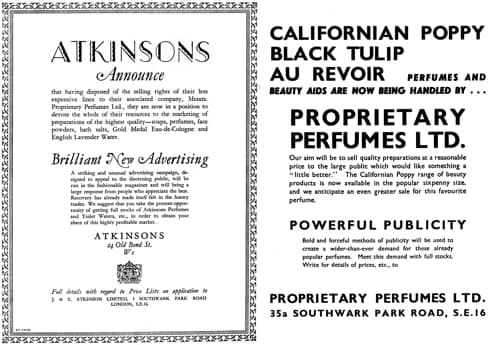
Above: 1934 Trade announcement for Proprietary Perfumes.
Proprietary Perfumes
Once shifted to Proprietary Perfumes, the three lines could be ‘backed by a vigorous advertising campaign conceived on bolder lines than had hitherto been judged expedient’, i.e. advertising could be aimed at the lower end of the cosmetic market while minimising the risk of this affecting the standing of the Atkinson brand.
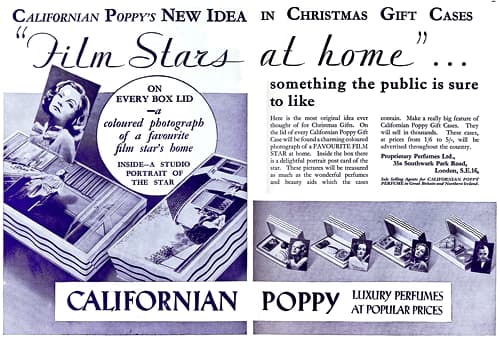
Above: 1935 Trade announcement by Proprietary Perfumes for Californian Poppy.
The changes to the way Californian Poppy, Au Revoir and Black Tulip were marketed do not seem to have been followed by Atkinson’s overseas subsidiaries which carried on much as before. At home, the separation would also unravel with the start of the Second World War.
Free to provide products for the cheaper end of the cosmetics market, Proprietary Perfumes departed from the usual Atkinsons’ way of doing things. Californian Poppy was already sold in a variety of forms including a perfume, talcum powder, face powder, soap and skin cream but the range was extended in 1939 so that it became a budget-priced beauty line. The Californian Poppy (Salon Planned) Beauty Treatment range contained a cleansing and nourishing cream, vanishing cream, face powder, skin tonic, anti-wrinkle oil, compact rouge and lipstick, each sold separately for only 6p.
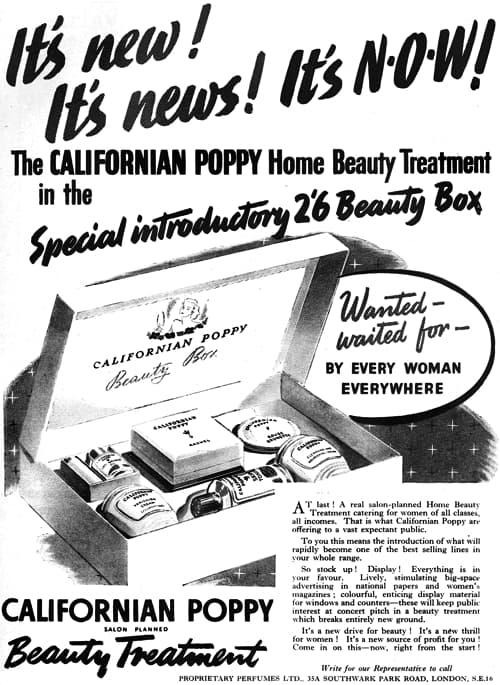
Above: 1939 Trade announcement for Californian Poppy Beauty Box.
Californian Poppy Cleansing and Nourishing cream: “Liquifies instantly on the skin and cleanses deeply, ridding the pores of all impurities. Keeps the skin in perfect condition.“
Californian Poppy Anti-Wrinkle Oil: “Braces up the muscles, and prevents wrinkles around the eyes and sagging of jaw-line and neck.“
Californian Poppy Skin Tonic: “To close pores and keep skin young and firm. Leaves a wonderful freshness.“
Californian Poppy Vanishing Cream (Foundation): “Skilfully blended to suit every skin. Protects against changing atmospheres. Powder clings on this smooth base.“
Californian Poppy Compact Rouge: “Gives glowing colour—subtle and lovely as Nature’s own.“ Shades: Blonde, Brunette, and Mandarine.
Californian Poppy Lipstick: “Wonderfully smooth, even texture, and indelible.“ Shades: Blonde, Brunette, and Mandarine.
Although this range appears to have been discontinued once the Second World War broke out it opened the way for Atkinsons to become more heavily involved in the wider beauty market.
Products
The transfer of Atkinsons’ cheaper lines into Proprietary Perfumes in the home market would supposedly leave Atkinson to focus on its more prestigious products such as its Gold Medal Eau de Cologne and English Lavender Water as well as its more recent entrants such as Sonnet, Spring Days and Insouciance fragrances.

Above: 1919 Insouciance.
Atkinson organised most of its product lines around fragrances. When new perfumes were developed they were often accompanied with companion products, generally starting with powder and soap. For example, when Insouciance was introduced in 1919, it was followed by a complexion powder, complexion cream, bath salts, dusting powder, toilet soap, toilet sachets and brilliantine, all smelling of the new scent.
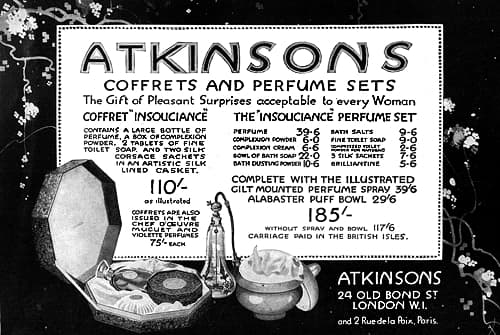
Above: 1920 Insouciance Coffrets.
This meant that different face powders and complexion creams were made from the same formula and were only distinguished by their scent, and the face powders were produced in the same shade ranges. In addition, although the bottles used to house the perfumes were generally distinctive and the accompanying soaps came in a range of shapes, the make-up and skin-care products were housed in containers of the same size and shape, with only their artwork to differentiate them.

Above: 1933 Californian Poppy, White Rose and Black Tulip powder boxes (Australia).
Skin-care
During the 1930s, the only change in Atkinsons’ limited range of skin-care products was to replace its variously scented complexion creams with cold and/or vanishing creams thus bringing them more into line with the way most creams were marketed at the time.
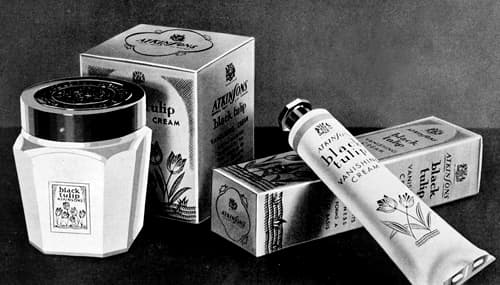
Above: 1933 Black Tulip Cold and Vanishing Creams (Australia).
Vanishing Cream: “[F]orms a smooth, even base to which your powder clings with an exquisite, velvety smoothness, until you remove it.”
Cold Cream: “[N]ourishes your skin as it cleanses. Its rich, creamy texture keeps the tissues of the skin young and supple … also acts as a tonic restoring a dull complexion to glowing youthfulness.”
Make-up
Compact powders and rouges had been added to many lines during the 1920s but the shade range for all these powders remained limited. Most of Atkinsons’ face powders only came in a maximum of 8 shades right through until the Second World War. An exception to this was Atkinsons No. 24 Face Powder introduced in 1932. This was produced in 12 shades – Rachel 1, Rachel 2, Naturelle, Rose 1, Rose 2, Blanche, Brunette 1, Brunette 2, Sunburn, Electric, Tango, and Nile – in the United Kingdom. The 12 shades were not rolled out in all parts of the world. In Australia, for example, No. 24, like Black Tulip, Californian Poppy and other face powders, was only sold in 8 shades – Rachel, Rachel No.2, Natural, Suntan, Ochre, White, and Brunette – while Argentina got 10 – Rachel, Rachel 2, Naturelle, Rosee, Abricot, Chair, Ocre, Blanche, Tango, and Nil.

Above: 1939 Atkinsons Freshette. The absorbent pad could be splashed with Eau de Cologne before being wiped across the face.
War
The Second World War resulted in major changes at Atkinsons. On the product front, the lack of raw materials, limitations imposed by sales regulations and the requisitioning of the Bermondsey site by the Ministry of Aircraft Production forced the company to reduce or cease production of a number of lines. In 1941, perfume production largely stopped, the exceptions being Californian Poppy and Gold Medal Eau de Cologne, the later going completely out of production in 1944. The available shades of No 24 Face Powder shades were also reduced from twelve to five: Rachel, Naturelle, Abricot, Ambree, and Ochre-Rosee.
Atkinsons did manage to add one new item to their British inventory during the war, a beauty cream called Skin Deep. This was an all-purpose cream that could be used as a day cream, night cream or as a foundation for make-up. It only appears to have been introduced into Britain in 1943 or 44 but was available in Australia in 1940 so may have been developed there.
Skin Deep: “[A] Non-Alkaline Skin Cream, altogether different from anything else, and almost a sensation wherever it is introduced! It’s the first and only cream of its kind. It simply soaks right into your skin, softening, nourishing and rejuvenating.”
In 1944, Atkinsons (Australia) also launched Chiffon Face Powder, only found there. It seems to have been discontinued once the war was over.
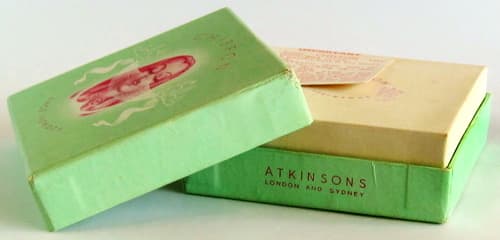
Above: Chiffon Face Powder (Australia). It came in Rachel, Deep Rachel, Orchid Mist, Blush, Harvest Tan, and Natural shades.
In Britain, Atkinsons got caught up in a series of structural changes. In 1941, Unilever put the distribution of Atkinsons, Erasmic and Proprietary Perfumes in the United Kingdom into the hands of Doudney and Co., another of its subsidiaries, which then changed its name to Atkinsons and Erasmic Ltd. The following year, Unilever took more drastic action and combined the distribution of Atkinsons, Erasmic and Proprietary Perfumes with Crown Perfumery and Icilma and put them all in the hands of A. & F. Pears, also owned by Unilever. By 1945, Atkinsons had become fully integrated into Unilever, becoming one small cog in a company that would fail to protect any of these smaller brands.
See also: Icilma
Post war
In 1945, Horace Barrett [1872-1957] retired, severing a major link with the company’s past. Atkinsons was now fully integrated into Unilever. Typically, Unilever tried to mass-market Atkinsons and this did little more than erode its prestige. The company posted consistent losses every year from 1948 through to the 1960s when Unilever decided to wind the company up in the United Kingdom.
Things were not as bad everywhere. Sales in Italy and South America were still good and the company introduced a number of new scents to join its Gold Medal Eau de Cologne, English Lavender and other fragrances.

Above: 1953 Atkinsons Golden Age introduced to celebrate the coronation of Queen Elizabeth II [b.1926].
In the United Kingdom, Unilever tried to make Atkinsons into a beauty, as well as a perfume and soap company.
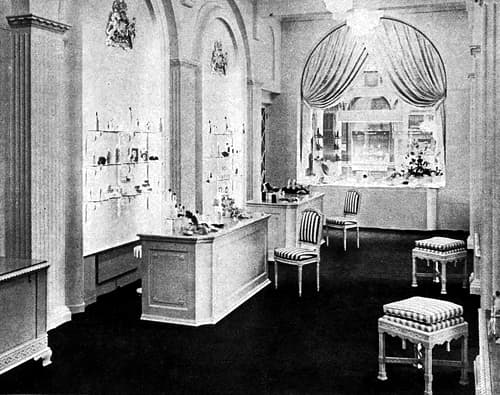
Above: 1951 Interior of Old Bond Street store.
A beauty salon was installed at Old Bond Street – updated in 1958 – and the company added a beauty advisor, Susan Hunt, and beauty hints to many of its advertisements.
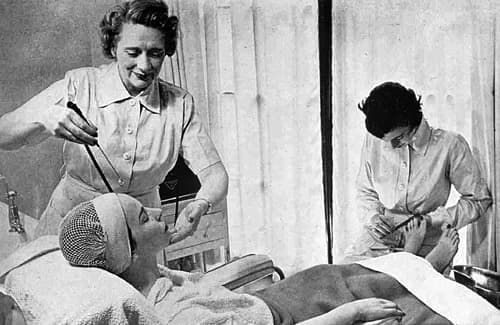
Above: 1953 Atkinson Spraytone facial and pedicure salon treatments.
In 1950, Atkinsons followed the path laid down by Californian Poppy in 1939 and launched a new cosmetic range. Included in the range was a Cleansing Cream, Foundation Cream (3 shades), Powder Rouge (3 shades), Face Powder (6 colours) and Dimplestick Lipstick (6 Shades). The salon at Old Bond Street enabled the company to describe the new range as ‘salon-tested’ rather than ‘salon planned’ as was the case with Californian Poppy.
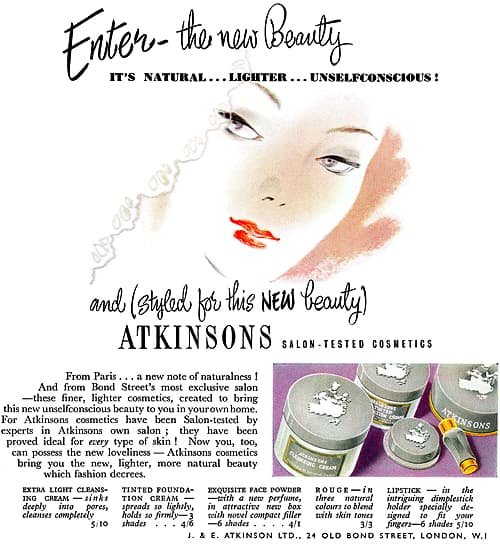
Above: 1950 Atkinsons New Beauty packaged in distinctive grey-topped containers with white lady design.
Skin-care
The only skin-care line initially included in the new range was a cleansing cream but Atkinsons quickly followed this with a Night Cream and Hand Lotion in 1951, and a Toning Lotion in 1952.
Cleansing Cream: “Extra light for deep cleansing. It keeps your skin clear—smooth—young.”
Night Cream: “Its combined oil and moisture content nourishes and protects your skin.”
Toning Lotion: “[R]efines your skin, keeps it smooth and flower-like. Use it night and morning, to close your pores and refresh your skin.”
Atkinsons also tried to capitalise on the Skin Deep Beauty Cream it had introduced into Britain during the war.
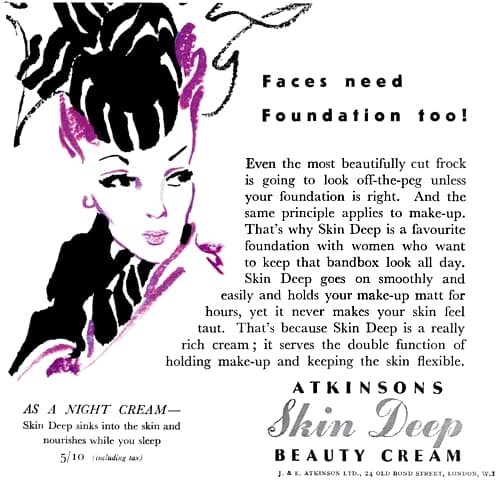
Above: 1946 Skin Deep Beauty Cream.
In 1953, a new powder base, Skin Deep Foundation Cream was added in two shades – plain and rose-coloured – along with Skin Deep Complexion Soap and Skin Deep Beauty Mask. The line was further extended with Skin Deep Hand Cream in 1957. The ‘special ingredient’ in all of these skin-care cosmetics was probably lanolin.
Beauty that Dares to Come Closer
How embarrassed can one get? Certainly not much more than when your complexion is getting a close-up scrutiny you know that your make-up is only good for a distant glance! Do you want to have beauty that dares to come closer? It was to fill the need of busy women for a simple beauty routine that really improved the skin that Atkinsons planned their Skin Deep method.
And nothing could be simpler! Just three special related preparations—Complexion Soap, Skin Deep Nourishing Cream and Skin Deep Foundation. The Nourishing Cream is the same Skin Deep Cream that has been popular for several years—the extra rich cream that is readily absorbed by even the most sensitive skin, and because of a special ingredient that it contains, overcomes age-revealing dryness. The same amazing cream is contained also in the new Skin Deep Complexion Soap and the Skin Deep Foundation Cream, so that by the regular use of all three of these related preparations the skin becomes lovelier every minute of the day and night.(Atkinson advertisement, 1953)
The company appears to have backtracked on this arrangement with Skin Deep Beauty Cream – tinted or untinted – still being promoted as a foundation later in the decade.
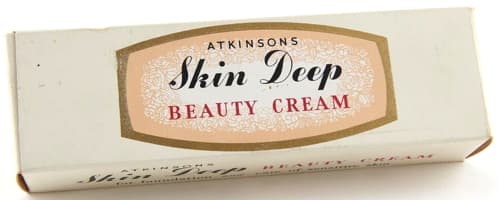
Above: c.1960 Skin Deep Beauty Cream for foundation and care of sensitive skin (Smithsonian).
In 1955, Atkinsons added yet another skin-care cream called Skinfare. Initially sold as a ‘night-feeding cream’ without hormones or vitamins, it was being promoted as a moisturiser by 1960. Moisturisation was also stressed in Olva, a new hand lotion also introduced by Atkinsons in 1960.
Skinfare: “The light texture of the cream emables it to be absorbed immediately into the skin, to replenish lost moisture and give increased suppleness and softness to the complexion.”
Olva: “[A] blend of moisturizers and oils in a fine emulsion which acts like magic on unhappy hands.”
Other products added in 1960 were Declair, a creamy, skin-cleansing lotion, and Vital, an all-in-one conditioner for hair. Typically, Olva, Declair and Vital were all ideally suited to the mass-market favoured by Unilever.
Make-up
The new range introduced in 1950 contained a foundation, face powder, rouge and a lipstick. The lipstick was an indelible and came in a refillable Dimplestick case.
Tinted Foundation Cream: “Smooths on lightly at a touch. Will not dry your skin or clog the pores”
Face Powder: “Light, fine and softly clinging, this powder gives a delicate, porcelain finish that lasts and lasts on your skin.” Shades: Pale Almond, Naturelle, Rachel, Light Rachel, Rose Rachel, and Honey Velvet. Also Dreamy Pink ,and Light Peach (1954).
Rouge: “In three natural colours to blend with skin tones.”
Lipstick: “Lasts longer—smoother on your lips. The dimplestick case is a joy to hold—and its made to fit your fingers.” Shades: First Blush, Polka Pink, Heartspin, Mad Red, Second Glance, and Tomboy. Also Coronation Pink (1952), and Claret, and Mayfair Pink (1954).
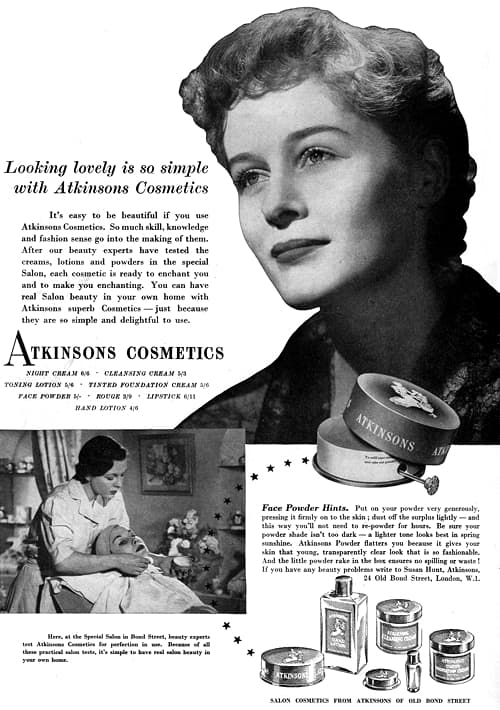
Above: 1952 Atkinsons Cosmetics now with a Hand Lotion. The model is Virginia McKenna [b.1931].
Atkinsons tried to improve the prestige of the line by aligning it with the British fashion designer Norman Hartnell [1901-1979]. It might have attracted some attention in the 1930s but by the 1950s, the product choice was too small and the shade range too limited compared to salon brands like Elizabeth Arden and Helena Rubinstein and newer entrants into the British market like Max Factor and Revlon.
See also: Max Factor (1930-1945) and Revlon (1945-1960)
Nevertheless, Atkinsons stuck with the range adding Ribbon Twist lipstick, a creamy, non-indelible in First Blush, Mayfair Pink, Gay Coral, Mad Red, Heartspin, Pink Jig, and Wild Peony shades in 1955; and Eyeshadow in 1956. New shades of foundation – Peach Rose, Softest Rose, Rose Rachel, Honey Rose – and face powder – Peach Rose, Softest Rose, Sun Glint, Honey Rose, and Spanish Gold – were added in 1956.
Men’s range
Another post-war development was the expansion of products made specifically for men. Atkinsons had a long history in this area, manufacturing men’s shaving products and brilliantines with Gold Medal Eau de Cologne generally recommended as a aftershave.
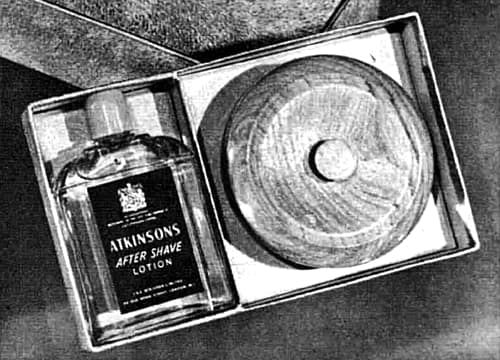
Above: 1953 Atkinsons After-Shave Lotion and Shaving Bowl with Soap.
In 1960, the company launched a new men’s range consisting of a Lather Shave Cream, Brushless Shave Cream, Pre-Electric Shave After Shave Lotion, Crystal After Shave, Talc for Men, Cologne for Men and a Shaving Bowl.
Later developments
In 1954, the manufacture of Atkinsons perfumes was moved from Bermondsey to a new site in Leeds, owned by Joseph Watson and Sons, another Unilever subsidiary.
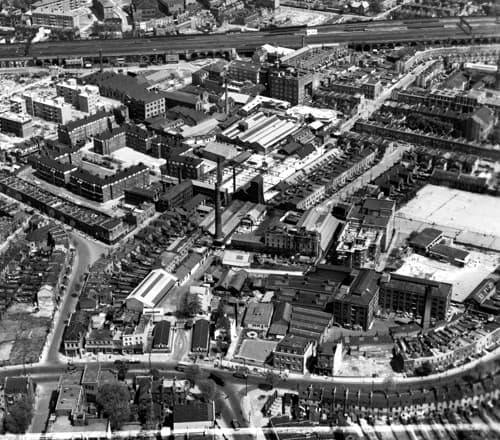
Above: 1951 Eonia Works in Bermondsey showing some air raid damage.
Unilever would open a new perfumery manufacturing centre in Ashford Kent in 1963, managed by Proprietary Perfumes Ltd., Unilever repurposing the subsidiary Atkinsons had created in 1934.
In 1963, Unilever transferred Atkinsons’ British business to E. R. Holloway Ltd., a company Unilever had taken over in 1961. Atkinsons’ last links with 24 Old Bond Street appear to have come to an end in 1965 when its administration offices were moved to 45 Portman Square, London.
In 1990, Unilever formed the Unilever Personal Products Group Italy which included Atkinsons Italian operations. The new entity was given a degree of autonomy in 1993 and this allowed Atkinsons to develop the I Coloniali fragrance and bath line introduced in 1994. It was successful and was introduced into Britain in 1995 through Brand Managers, Inc. marking a return of Atkinsons to the United Kingdom after a long absence.
In 2000, Unilever announced its ‘Path to Growth Strategy’ which would see it reorganise or divest itself of businesses that failed to meet its strategic targets. Subsequently, Unilever sold Atkinsons to Cosmopolitan Cosmetics, the cosmetics and fragrance subsidiary of Wella AG, for US$43.4 million in 2002. Wella was bought by Procter & Gamble in 2007 who then on-sold Atkinsons to Morris Profumi, an Italian-based subsidiary of Investindustrial, for €20 million in 2008. After separating out I Coloniali from Atkinsons, they relaunched Atkinsons in Britain as Atkinsons 1799, opening a flagship store in the Burlington Arcade, Mayfair in 2017. The two parts were rejoined when Atkinsons 1799 and the I Coloniali brands were bought by EuroItalia in 2020.
Timeline
| 1930 | J. & E. Atkinson (Australia) Ltd. founded. Factory opened in Sydney, Australia. Kent Brush Sales Corporation appointed as Atkinsons’ American distributor. New York showrooms opened at 411 Fifth Avenue. |
| 1932 | New Products: No. 24 Face Powder. |
| 1934 | Proprietary Perfumes Ltd. established. Larger factory built in Buenos Aires, Argentina. |
| 1935 | Offices, warehouse and factories combined at Eonia Works, Southwark Park Road, London. |
| 1937 | J. & E. Atkinson (Australia) Ltd. becomes J. & E. Atkinson Pty. Ltd. |
| 1938 | New perfumery factory built in Rio de Janeiro, Brazil. |
| 1939 | New Products: Californian Poppy cosmetic range (Proprietary Perfumes). |
| 1940 | New Products: Skin Deep Beauty Cream. |
| 1941 | Doudney and Co. becomes distributor for Atkinsons and Erasmic. Changes its name to Atkinson and Erasmic Ltd. |
| 1942 | Pears becomes the selling agents for Atkinsons. |
| 1946 | D. & W. Gibbs (UK) Ltd. takes over sales for Californian Poppy. |
| 1950 | Unilever takes over cologne manufacture. New Products: New range consisting of Cleansing Cream, Foundation Cream, Powder Rouge, Face Powder, and Lipstick in new packaging. |
| 1951 | New Products: Night Cream; and Hand Lotion. |
| 1953 | New Products: Skin Deep Foundation Cream; Skin Deep Nourishing Cream; Skin Deep Complexion Soap; and Skin Deep Beauty Mask. |
| 1954 | Manufacturing moved to a site in Bermondsey owned by Joseph Watson and Sons. |
| 1955 | New Products: Ribbon Twist Lipstick. |
| 1957 | New Products: Skinfare; and Skin Deep Hand Cream. |
| 1958 | London beauty salon updated. |
| 1960 | New Products: Declair cleansing lotion; Vital hair conditioner; Olva hand lotion; and a men’s range. |
| 1963 | Atkinsons U.K. business transferred to E. R. Holloway Ltd. |
| 1964 | Skin Deep range repackaged. |
| 1965 | Administrative offices moved to 45 Portman Square, London. |
| 1968 | J. & E. Atkinson GmbH founded in West Germany. |
| 1990 | Unilever Personal Products Group Italy formed. |
| 1994 | New Products: I Colonial line. |
| 1995 | I Coloniali introduced into Britain through Brand Managers. Inc. |
| 2002 | Atkinsons sold to Cosmopolitan Cosmetics, a subsidiary of Wella AG. |
| 2005 | Wella AG bought by Procter & Gamble. |
| 2007 | Morris Profumi acquire Atkinsons from Procter & Gamble. |
| 2010 | Morris Profumi merges with Selective Beauty to form Perfume Holding. |
| 2020 | Atkinsons 1799 and I Coloniali brands bought by EuroItalia. |
First Posted: 6th April 2020
Last Update: 14th April 2023
Sources
The chemist and druggist. (1859-) London: Morgan Brothers.
From bear’s grease to lightheart. A century and a half in the development of a London perfumer. (1949). The Chemist and Druggist, August 27, 286-288.
Unilever archives. Retrieved February 26, 2020 from http://unilever-archives.com
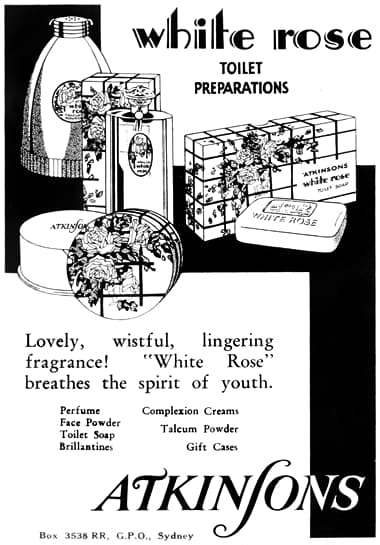
1930 Atkinsons White Rose (Australia).

1931 SA J. & E. Atkinson (Brazil).
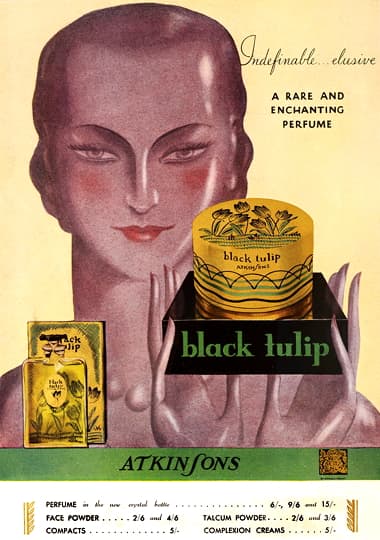
1931 Atkinsons Black Tulip (Australia).

1931 Atkinsons Californian Poppy (Australia).
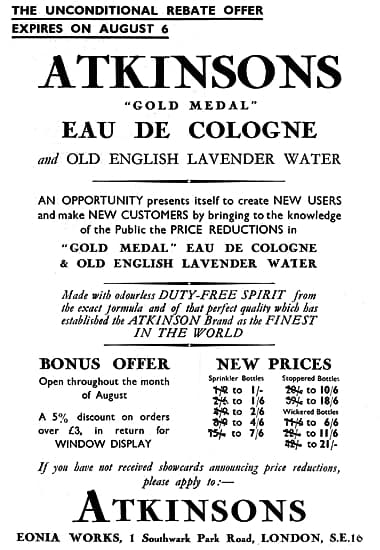
1932 Trade advertisement announcing price reductions.

1932 Atkinsons No. 24 Face Powder (Australia).

1933 Atkinsons Gold Medal Eau de Cologne.
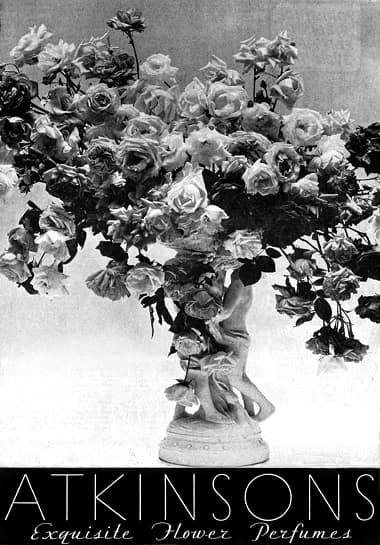
1935 Atkinsons Flower Perfumes: Carnation, Liliac, Jasmin, Narcissus, Rose, Lily of the Valley, Sweet Pea, and Violet. Each made from natural essence.
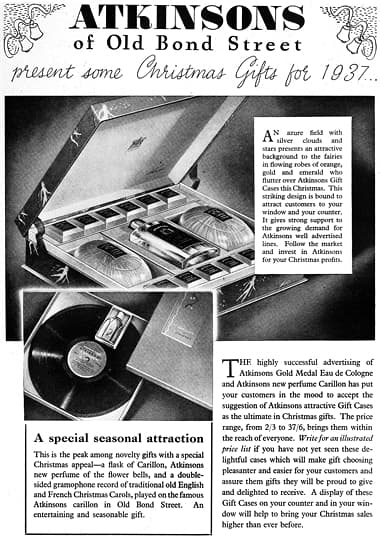
1937 Atkinsons Carillion.
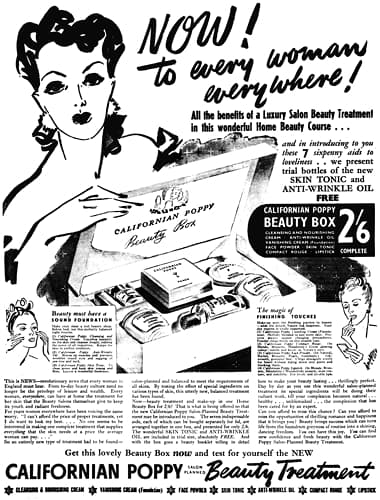
1939 Californian Poppy Beauty Box.

1939 A.R.P. (Air Raid Precautions) Fresh-Aid packs containing a bottle of Gold Medal Eau de Cologne and Smelling Salts for use in air-raid shelters.
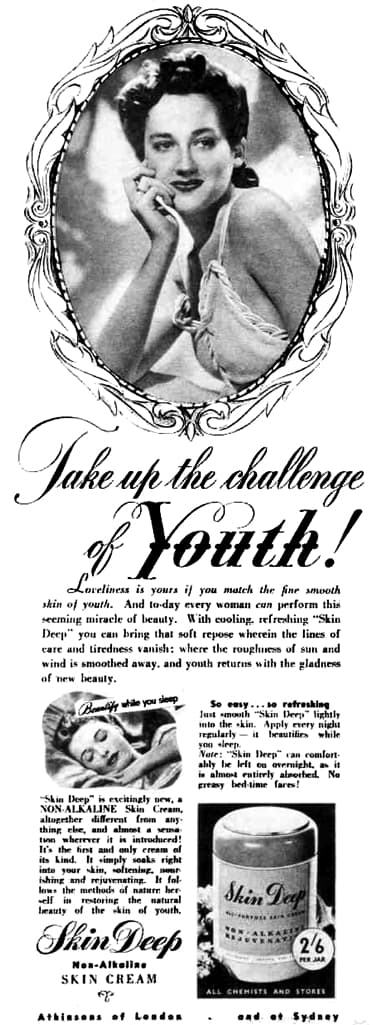
1940 Atkinsons Skin Deep (Australia).

1942 Atkinsons New Mown Hay (USA).

1947 Atkinsons Colour-Graded Face Powder, despite only being available in 6 shades.
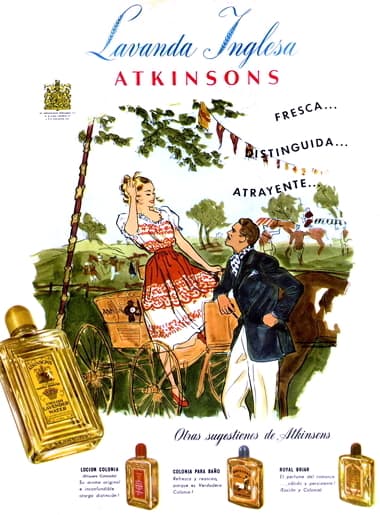
1948 Atkinsons English Lavender (Brazil).

1948 Atkinsons Skin Deep.

1949 Atkinsons (United States).

1951 Atkinsons Cosmetics.
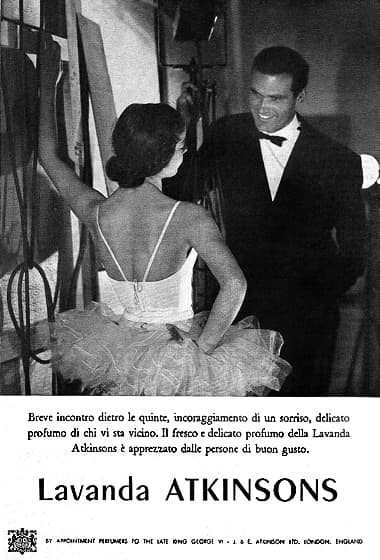
1953 Lavanda Atkinsons (Italy).
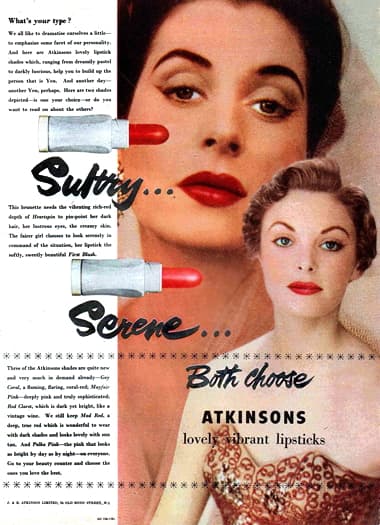
1954 Atkinsons Dimplestick Lipstick in Heartspin and First Blush shades.

1954 Atkinsons Californian Poppy.
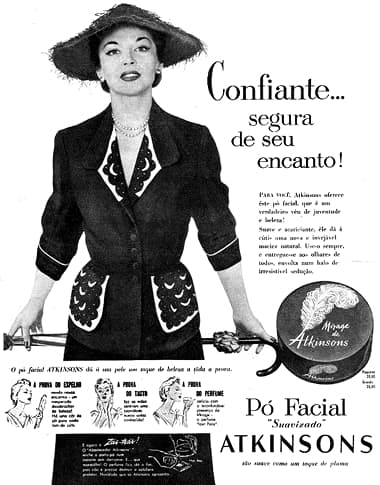
1954 Atkinsons Mirage (Brazil).

1954 Atkinsons Light Peach shade of Face Powder.
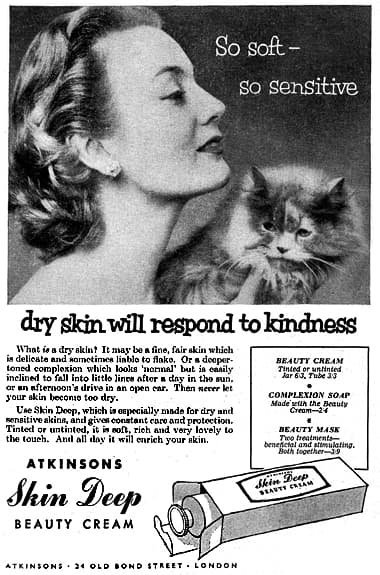
1956 Atkinson Skin Deep Beauty Cream, Skin Deep Complexion Soap and Skin Deep Beauty Mask.
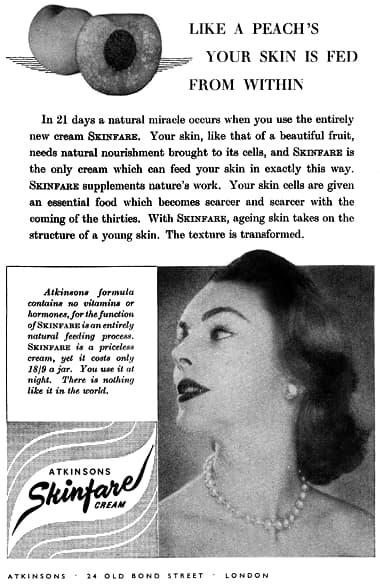
1956 Atkinson Skin Fare.

1956 Atkinsons Ribbon Twist Lipstick in a refillable case.

1960 Trade advertisement for Vital Hair conditioner.
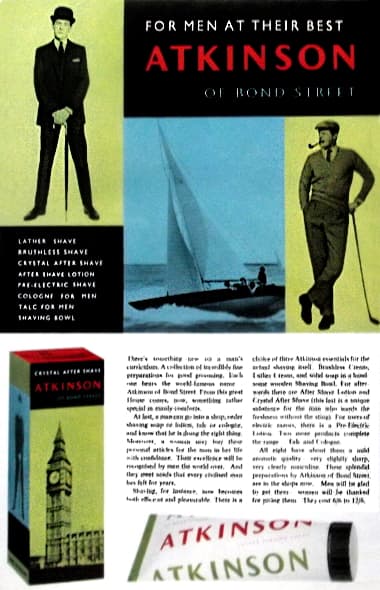
1960 Atkinsons for Men.

1965 Atkinsons of London (Italy).
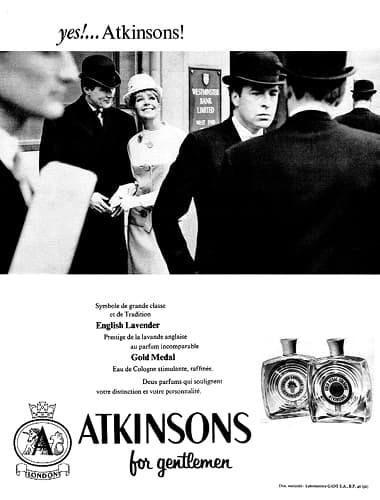
1966 Atkinsons for gentlemen (Italy).
